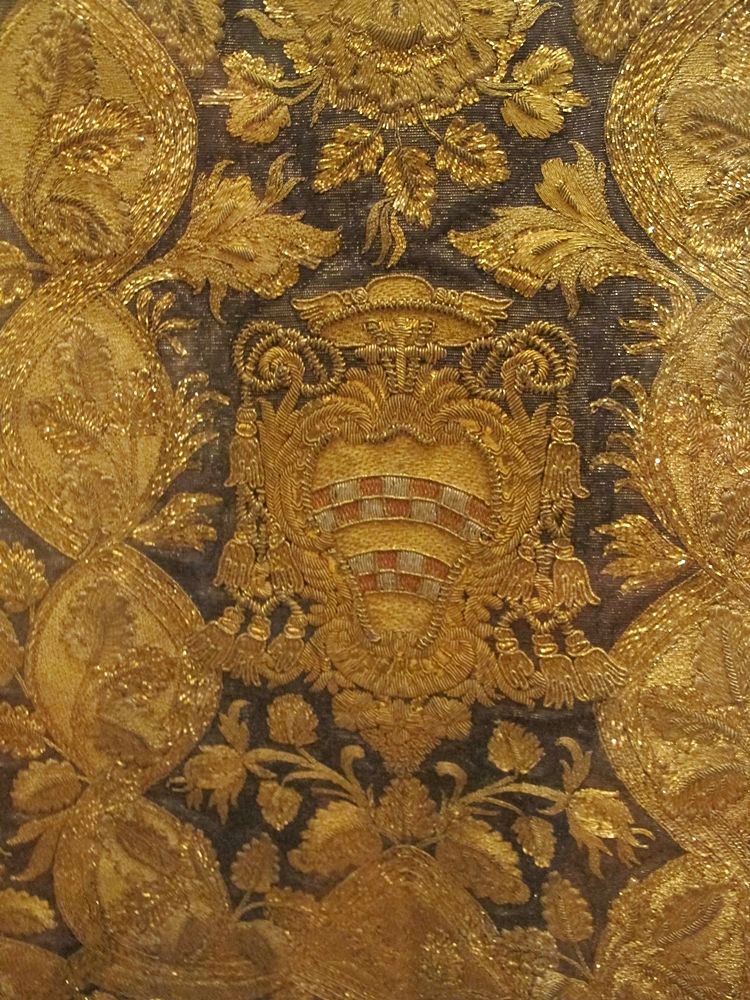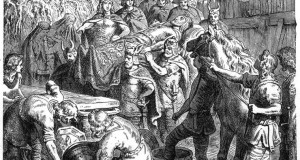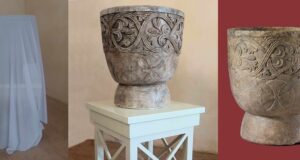
Pianeta in seta “gros de Tours” con stemma cardinalizio, 1600-1650 ca. – Ph. Sailko | CCBY-SA3.0
The art of silk working was one of the Calabria history Byzantine heritages, maybe the most important one, which ensured the success all around Europe to Calabria and above all to its capital. In facts the tissues of the Catanzaro spinning mills was so precious that they were one of the most popular products in the old continent fairs and markets. Furthermore, we can say that Calabria workforce’s teaching and technological support was one of the factors at the base of the French silk industry launching (Tours and Lyon ones in particular).
I charted the course of this unexpected path in my book “The silk in Catanzaro and Lyon”, following the wake of the historical events. It all started in about the VI century, when Byzantines introduced the silk working in Calabria. Soon this activity developed until it competed with Syria and then with the empire capital, Constantinople. It was Catanzaro that differed as manufacturer centre of excellence in Calabria and first important centre in Italy (in the next centuries the production consolidated also in Venice, Florence, Genova, Bologna and in particular in Lucca).
In the capital of Calabria, the noble art of silk reached such a level of excellence that the silk tissues were nominated in notarial deeds and testaments just after jewels and the kings encouraged it with privileges and parchments. Furthermore, in 1519 Charles V granted only to Catanzaro, after Naples, the Art of Silk Consulate, which involved a lots of fiscal privileges too. The silk industry provided comfort to citizens and celebrity to the city: the manufactures identified with the symbol of three “V” (Wind, Velour, Vitaliano, attributes alluding to the wind, to the tissues and to the patron saint of the city) were known and appreciated al around Europe.
So, it’s easy to believe that, when Louis XI, in 1470 took an official decision to implant a silk industry in France, called a group of silk workers from Italy and among them there were also Calabrian masters. It was just a worker from Catanzaro, whose name was Giovanni, that guided the launching of the first silk manufacturing in Tours, using his loom which would go down in history as le métier de Jean le Calabrais. Derived from the oriental models, this loom can be considered as the progenitor of the mechanized looms. One of its characteristics was the fact that the weaver worked alone, because it didn’t need anyone pulling the healds. It allowed great silk tissues enriched with golden and silver threads, single-colored tissues called “gros de Tours”, embroidered tissues and then damasks and furniture to be made. From that moment on the silk industry took hold in France and developed in other cities in addition to Tours.
In Lyon, after an initial attempt, which showed limited progresses, the silk industry had a momentum thanks to François I, who in 1536 decided to make silk workers from Italy move to Lyon. That decision achieved positive results and made Lyon reach a leading position among other manufacturing cities. That is not all. In facts the Lyon silk tissues commerce didn’t limit to France, but became active on a global scale. This happened from 1620 thanks to the invention of a Lyon silk worker called Dangon, who made a new type of hand loom to produce embroidered tissues.
Then the so called Jacquard loom, which substituted the Dangon’s one, strongly supported the development of embroidered tissues and the XVIII century can be defined as the Lyon silk industry golden century, for its creations delicious quality. The Lyon silk industry story is doubtless fascinating, above all for the ability which leaded French workers to emerge on global market to the present day.
But while it’s true that Catanzaro fell victim to the Spanish viceroyalty’s financial politics, that leaded to the great silk activity defeat, we should not forget that the French silkworkers following inventions were based on the progenitor invented by the weaver from Catanzaro called Giovanni. So we can conclude that the contribution of Italian masters and Calabrian technology was at the base of the Lyon silk industry.
© ALL RIGHTS RESERVED
NOTE: *All the information I needed to write this article is taken by the book “The silk in Catanzaro and Lyon”, by Angela Rubino, Rubbettino 2007

 Fame di Sud Il sud Italia come non lo avete mai visto
Fame di Sud Il sud Italia come non lo avete mai visto


